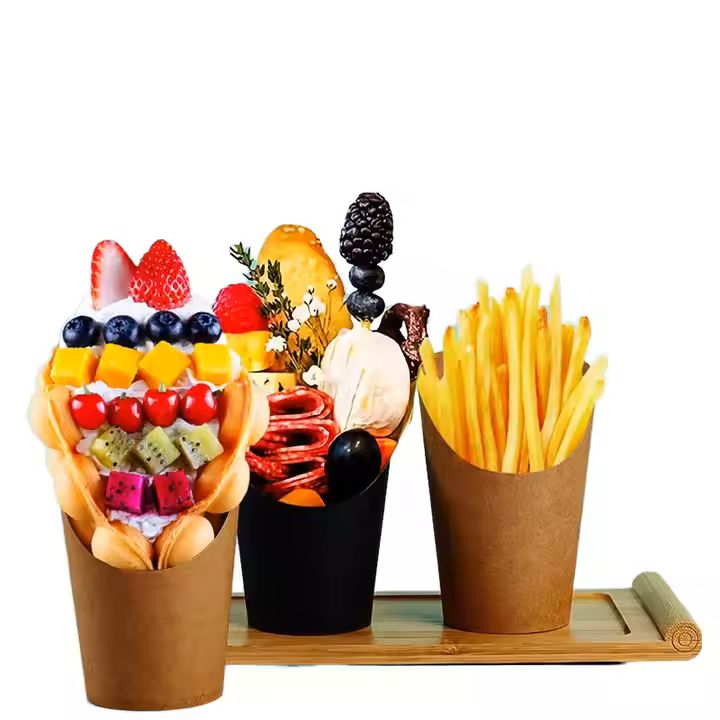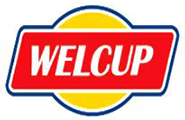From morning coffee runs to late-night takeout soups, paper cups have become an indispensable part of modern life. Lightweight, convenient, and increasingly eco-friendly, these containers are a marvel of engineering and sustainability. This article explores how paper cups are manufactured, their role in streamlining daily routines, and their growing importance in reducing humanity’s environmental footprint.

From Forest to Factory: The Manufacturing Process
The journey of a paper cup is a blend of precision engineering, material innovation, and environmental stewardship. Here’s a step-by-step breakdown of how paper cups are made:
1. Sourcing Raw Materials
Paper cups are primarily made from kraft paper, derived from wood pulp. To ensure sustainability, manufacturers often source wood from FSC-certified (Forest Stewardship Council) forests, where trees are replanted to maintain ecological balance. Some brands also incorporate recycled paper content, further reducing reliance on virgin materials.
2. Pulping and Paper Production
Wood chips undergo a chemical pulping process (like the Kraft process) to separate cellulose fibers from lignin, a natural binder. The resulting pulp is washed, bleached (optional), and pressed into large paper rolls. For cups requiring a glossy finish or branding, a base layer of clay or calcium carbonate may be applied during this stage.
3. Coating for Functionality
To make paper cups leak-proof and heat-resistant, the paper is coated with a thin layer of polyethylene (PE) or biodegradable alternatives like PLA (polylactic acid). PE, a petroleum-based plastic, has been the industry standard but is increasingly phased out in favor of plant-based PLA, derived from cornstarch or sugarcane. The coating is applied via extrusion machines, ensuring even distribution.
4. Printing and Customization
The coated paper is fed into high-speed printing presses. Using food-safe inks, manufacturers imprint logos, designs, or promotional messages. Advanced techniques like offset printing or digital printing allow vibrant colors and intricate patterns, aligning with brand identities.
5. Die-Cutting and Cup Formation
Printed sheets are die-cut into cup-shaped blanks. These blanks are then rolled into cylinders, with the edges sealed using heat or ultrasonic welding to prevent leaks. The bottom disc is pressed into place, creating a seamless base.
6. Quality Assurance
Finished cups undergo rigorous testing for leak resistance, heat tolerance, and structural integrity. Automated systems inspect for defects, ensuring compliance with food safety standards like FDA or EU regulations.
7. Packaging and Distribution
Cups are stacked, wrapped in protective film, and shipped to cafes, restaurants, and households worldwide.
The Convenience Revolution: How Paper Cups Simplify Modern Life
Paper cups have transformed the way we consume beverages and hot foods. Below are key advantages driving their global popularity:
1. Portability and Lightweight Design
Unlike ceramic mugs or glass bottles, paper cups are featherlight, making them ideal for on-the-go lifestyles. Their compact shape allows easy stacking, optimizing storage and transportation efficiency.
2. Heat and Cold Retention
The insulating properties of paper, combined with PE or PLA coatings, keep beverages hot or cold for extended periods. Double-walled cups enhance insulation, preventing burns while sipping hot drinks.
3. Hygiene and Single-Use Safety
In a post-pandemic world, single-use paper cups minimize cross-contamination risks in public spaces. Their disposable nature aligns with hygiene standards in hospitals, offices, and food service industries.
4. Custom Branding Opportunities
Businesses leverage paper cups as mobile billboards. A café’s logo or a seasonal design turns every cup into a marketing tool, fostering brand recognition and customer loyalty.
5. Versatility Across Industries
Beyond coffee and tea, paper cups are used for soups, ice cream, snacks, and even as plant pots or craft materials. Their adaptability makes them a staple in diverse settings, from food trucks to corporate events.
Environmental Impact: Balancing Convenience and Sustainability
While paper cups offer unmatched practicality, their environmental footprint has sparked debates. Here’s how the industry is addressing these challenges:
1. The Recycling Dilemma
Traditional PE-coated cups are difficult to recycle because separating paper from plastic lining requires specialized facilities. However, advancements in PLA coatings allow cups to be composted industrially, breaking down into water, CO2, and biomass within months. Brands like WELCUP (www.welcomecup.com) now offer PLA-based cups, promoting circular economy principles.
2. Reduced Carbon Emissions
Compared to plastic or Styrofoam cups, paper cups have a lower carbon footprint. A 2021 study by the Paper Cup Alliance found that paper cups generate up to 50% fewer greenhouse gases over their lifecycle than plastic alternatives, especially when made with renewable energy.
3. Consumer Behavior and Infrastructure
Public awareness drives change. Over 60% of consumers in Europe and North America prefer businesses that use recyclable or compostable cups. Governments are also investing in composting infrastructure. For instance, the EU’s Single-Use Plastics Directive mandates that all cups must be recyclable by 2030.
4. Innovations in Material Science
Emerging technologies are reshaping cup production:
Water-Based Coatings: Replace plastic linings with eco-friendly barriers made from algae or chitosan.
Molded Fiber Cups: Made from agricultural waste (e.g., wheat straw), these cups are 100% biodegradable and require no coating.
Reusable Paper Cups: Brands like CupClub offer RFID-tracked cups for urban rental systems, reducing waste in cities.
5. Corporate Responsibility Initiatives
Major chains are leading the sustainability charge:
Starbucks aims to eliminate single-use cups by 2025, introducing reusable cup borrowing programs.
McDonald’s transitioned to recycled paper cups in Europe, saving 1,200 tons of plastic annually.
Local Cafés partner with startups like TerraCycle to collect and upcycle used cups into furniture or construction materials.
Case Study: WELCUP’s Eco-Friendly Paper Cups
Chengdu Welcotech Co., Ltd., under its brand WELCUP (www.welcomecup.com), exemplifies innovation in sustainable cup manufacturing. Their product line includes:
PLA-Coated Cups: Compostable in industrial facilities, aligning with zero-waste goals.
Recycled Paper Cups: Made with 30% post-consumer waste, reducing deforestation.
Customizable Designs: Print-on-demand options minimize overproduction and inventory waste.
By prioritizing renewable materials and collaborating with global recycling networks, WELCUP has helped clients reduce packaging-related emissions by 40% since 2020.
The Road Ahead: Challenges and Opportunities
Despite progress, hurdles remain:
Cost Barriers: Biodegradable cups are 20–30% pricier than conventional ones, deterring small businesses.
Limited Composting Access: Only 15% of urban areas globally have industrial composting facilities.
Consumer Education: Misconceptions about “biodegradable” vs. “compostable” labels lead to improper disposal.
To overcome these, stakeholders must:
Subsidize Sustainable Alternatives: Governments could tax single-use plastics while offering grants for eco-friendly packaging.
Expand Infrastructure: Invest in composting plants and recycling hubs.
Educate the Public: Launch campaigns to clarify disposal protocols for coated paper cups.
Conclusion
The humble paper cup is a testament to human ingenuity—a product that balances practicality, aesthetics, and environmental responsibility. From responsibly sourced pulp to compostable coatings, every stage of its lifecycle reflects a growing commitment to sustainability. As consumers demand greener options and regulators tighten standards, the paper cup industry stands at the forefront of a packaging revolution. Brands like WELCUP prove that convenience need not come at the planet’s expense. By embracing innovation and collaboration, we can ensure that future generations enjoy their coffee—and a cleaner Earth—in equal measure.
For businesses and individuals alike, the choice is clear: every sip from a paper cup is a step toward a more sustainable tomorrow.

